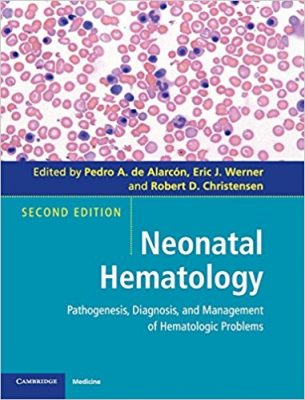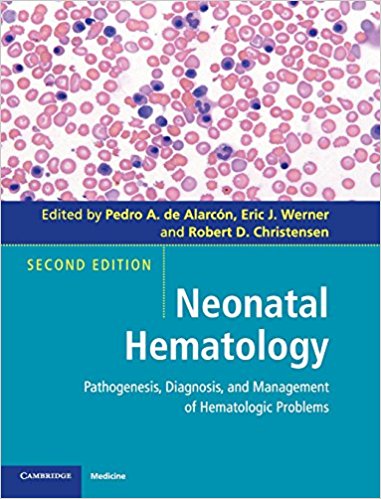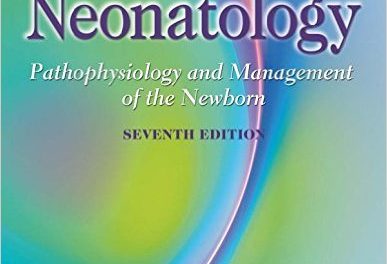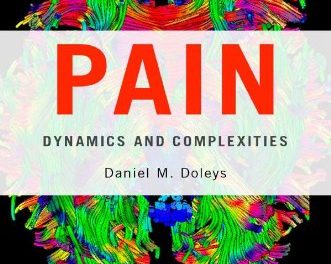 Editors: Pedro A. de Alarcon, Eric J. Werner, and Robert D. Christensen
Editors: Pedro A. de Alarcon, Eric J. Werner, and Robert D. Christensen
Publisher: Cambridge University Press – 418 pages
Book Review by: Nano Khilnani
Pediatric hematology began as a separate field distinct from adult hematology, with the publication of Blood Disorders of Infancy and Childhood in 1960, authored by Dr. Carl Smith.
“As comprehensive as this text was, it did not have an exclusive focus on the neonatal period, points out Dr. James Stockman III in his Foreword.
But a later book published in 1966 – Frank Oski’s and Lawrence Naiman’s Hematologic Problems of the Newborn – provided that needed focus, with updated editions in 1972 and ten years later, in 1982.
There have been many other books since 1982 on blood and related disorders of newborns. But this second edition of Neonatal Hematology, published in 2013 that we are providing an overview of here, looks quite closely at diseases and disorders in infants, just as its first edition did when it was released in 2005.
Dr. Stockman, who was president and CEO of the American Board of Pediatrics when he wrote his Foreword, notes: “While many texts in subsequent years (after 1982) have covered the wide scope of the discipline of pediatric hematology, few have taken a sharp focus and a truly deep dive into the hematologic disorders confronting the newborn, at least not until the publication of Neonatal Hematology in 2005.”
He concludes: ‘This book will serve as the new bible for hematologists and neonatologists alike when dealing with current concepts of blood disorders of the newborn.”
Thirty-nine specialists in various subspecialties of pediatrics including hematology, blood transfusion, clinical genetics, epidemiology, feto-maternal interaction, gynecology, infectious diseases, neonatology, neurology, obstetrics, oncology, pathology, and others, from the United States and two other countries – Australia and Switzerland – authored the 22 chapters of this book of 400+ pages organized into eight sections.
We list the titles of those sections here to provide you a broad overview of this book’s contents:
- Section I. Developmental Hematology
- Section II. Erythrocyte Disorders
- Section III. Platelet Disorders
- Section IV. Leukocyte Disorders
- Section V. Immunologic Disorders
- Section VI. Hemostatic Disorders
- Section VII. Transfusional Medicine
- Section VII. Miscellaneous
Among the five basic types of blood deficiencies, diseases, and disorders in newborns – erythrocytes, hemostatic, immunologic, leukocytes, and platelets – it is the immunologic, particularly immunodeficiency diseases, that provide a particularly unique challenge to neonatal hematologists caring for very small infants.
That challenge is “to be able to differentiate between immune immaturity and a true primary immunodeficiency that may present during the neonatal period,” write Drs. James L. Wynn, Matthew A. Saxonhouse, and John W. Sleasman, who are the authors of chapter 15, Immunodeficiency Diseases of the Neonate, in Section 5, Immunologic Disorders.
“Failure to properly identify primary immunodeficiency diseases can result in delayed diagnosis and treatment, which can significantly affect the outcome of the disease,” they explain in their introductory paragraph of this chapter.
In Table 15.1 entitled Defects in the immune response as a result of immunity on the first page of this chapter, they list four types of defects, along with their respective susceptibility and the respective age groups impacted.
The four defects, which all occur in term and pre-term infants, are:
- Opsonization (e.g. complement Ig fibronectin), with associated susceptibility being gram-negative and gram-positive bacteria
- T-cell-independent Ig (Immunoglobulin) production, with associated susceptibility being encapsulated bacteria
- Antibody-directed cellular cytotoxity, with associated susceptibility being viral infections
- Cytokine deficiencies, with associated susceptibility being herpes simplex viral (HSV) infections.
The authors point out that when an infant’s immune response system has not matured, it places her or her in an increased risk for serious infection. Also, a deficiency in the immune system (immunodeficiency) can make them vulnerable to contract various diseases. The authors lay out three important tables (Tables 15.3a, 15.3b, 15.3c) on page 257 relating to Immunoglobulin types (IgG, IgA, IgM) and ages of infants:
Table 15.3a– Immunoglobulin values to term infants to age 3 years
Table 15.3b– Plasma immunoglobulin concentrations in premature infants 25-28 weeks’ gestation
Table 15.3c- Plasma immunoglobulin concentrations in premature infants 29-32 weeks’ gestation
These are the four main topics presented and discussed in chapter 15, along with subtopics and sub-subtopics, along with relevant charts and tables providing supporting data:
- Immaturity of the neonatal immune system
- Innate immunity
- Specific immune deficiency disorders presenting in the neonatal period
- Diagnosis and management of neonatal immunodeficiencies
In summary, this is an excellent textbook on the several types of blood cell deficiencies, diseases, and disorders in infants. It contains important, detailed, and essential information for any medical professional, particularly aspiring and even established physicians in the specialty of neonatology.
Editors:
Pedro A. de Alarcon is William H. Albers Professor and Chair of the Department of Pediatrics at the University of Illinois College of Medicine in Peoria, Illinois.
Eric J. Werner is a member of the Division of Pediatric Hematology/Oncology at Children’s Special Group and Children’s Hospital of the King’s Daughters, and Professor of Pediatrics at the Eastern Virginia Medical School in Norfolk, Virginia.
Robert D. Christensen is Director of Neonatology Research at Intermountain Health Care and the McKay-Dee Hospital in Ogden, Utah.







